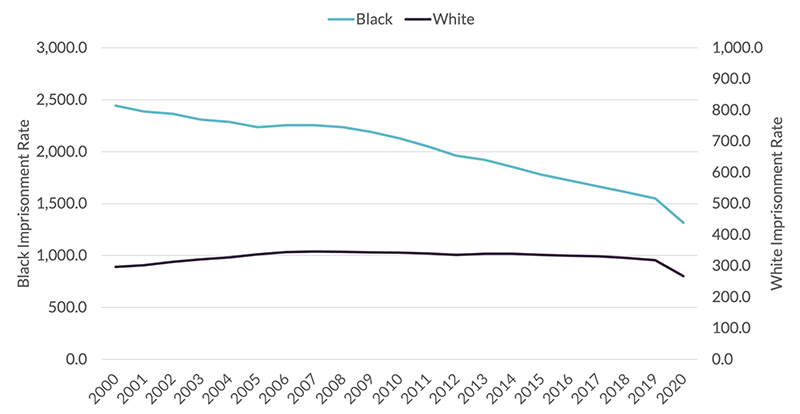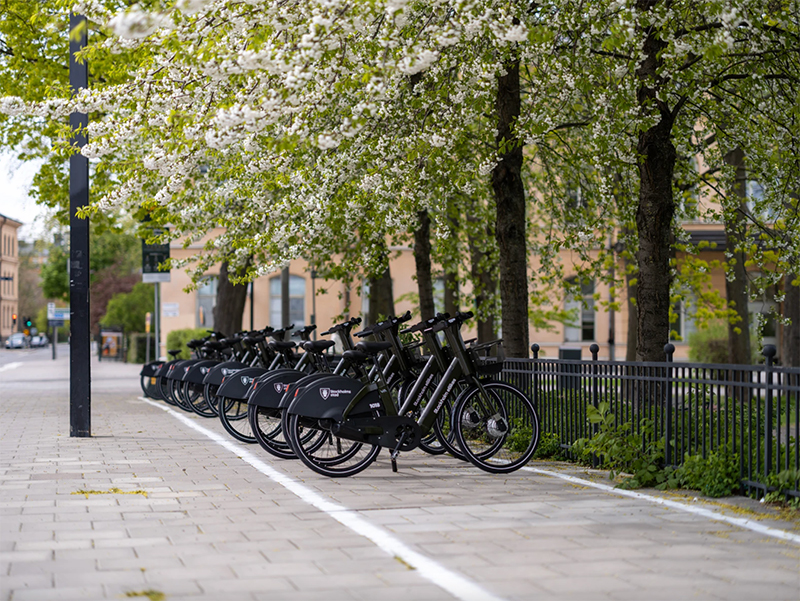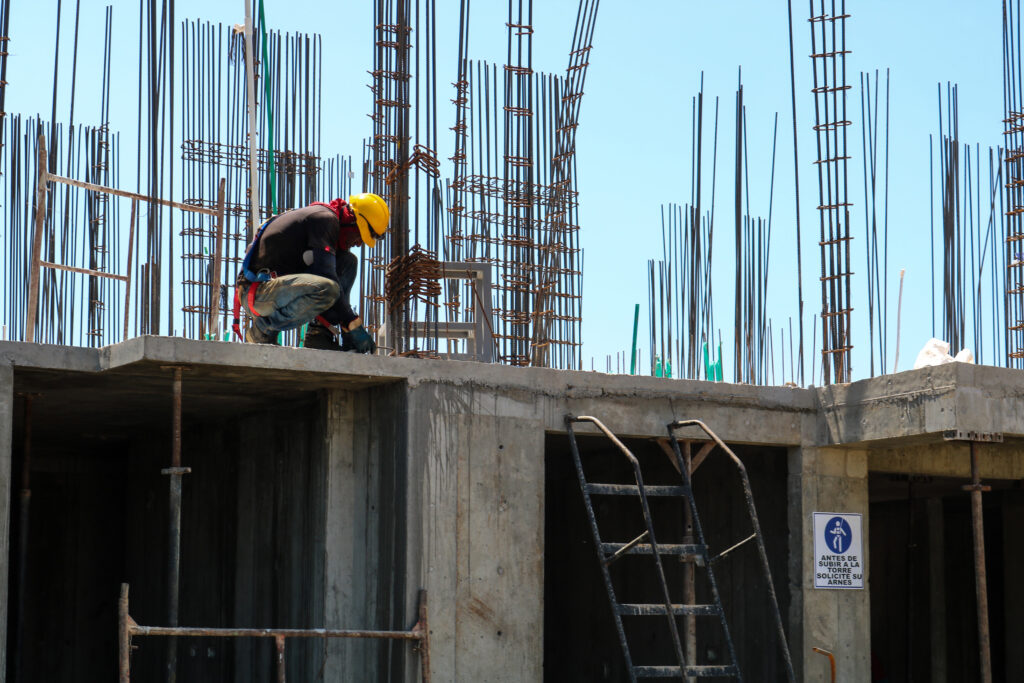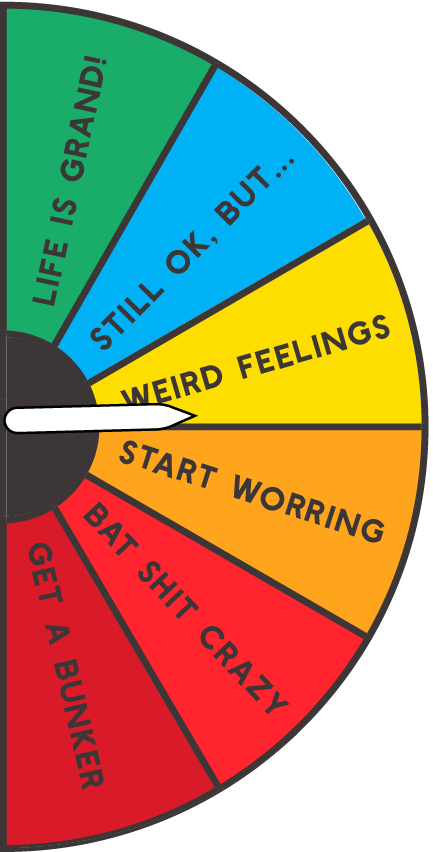Volcanoes are erupting in The Philippines, but on-fire Australia received some welcome rain. The Iran war cries have been called off and The Donald’s military powers are about to be hamstrung by the Senate. Meanwhile, his impeachment trial is starting, and we’re all on Twitter for a front-row seat.
What Could Go Right? The criminal justice system is becoming more equitable
Many Black-White disparities have narrowed.
This is our weekly newsletter, What Could Go Right? Sign up here to receive it in your inbox every Thursday at 6am ET. You can read past issues here.
A more equitable criminal justice system
The racial disparities in the United States’ criminal justice system have been an activist talking point and area of mobilization for years. Has any progress actually been made? In September, the nonpartisan think tank Council for Criminal Justice (CCJ) released a report with racial disparity data through 2020. (We just found it on Monday through The New York Times’ “The Morning” newsletter, which has been making a concerted and explicit effort recently to avoid bad news bias.)
CCJ found that “Although significant gaps remain, disparities between Black and White people continue to narrow at nearly every stage of the criminal justice process between 2016 and 2020.” From the report:
- In 2020, Black adults were imprisoned at 4.9 times the rate of White adults, down from 8.2 times in 2000. This includes all four offense categories—violent, property, drug, and public order.
- The Black-to-White disparity in arrest rates fell between 2000 and 2020, with the drop for drug and property crimes driving the decrease.
- By 2019, the Black-White disparity in arrest rates for non-fatal violent crimes was eliminated.
- The disparity in prison admissions for Black and White people has dropped. In 2000, Black people were 7.2 times more likely than White people to be admitted to state prison; by 2020, they were 3.2 times more likely. The Black-to-White disparity in admissions for property and drug crimes was nearly eliminated.
- Admissions for technical violations of parole no longer drive imprisonment disparities.
- Disparity in length of stay in prison increased between 2000 and 2020. Black people served an average of 0.2 years longer in 2000 and 0.7 years longer in 2020. The time served gap grew most dramatically for people convicted of drug crimes.
Black and White Imprisonment Rates, 2000-2020

The report does not get into how this all happened. The New York Times attributed some of it to pushback against mass incarceration, long prison sentences, and the war on drugs generally. In this newsletter last month, we reported on the US’ declining incarceration rates as a whole. So while that and what The New York Times says must certainly be part of the story, they do not fully explain, for instance, a finding such as the disparity elimination of arrest rates for non-fatal violent crimes, which perhaps paints an interesting picture around changes in policing. Neither does it adequately address the prison stay disparity increase. We don’t have the answers ourselves, but we’ll be eagerly awaiting more reporting on this.
While activists are commonly afraid that sharing such success risks taking people’s foot off the gas, we see it as a call to carefully examine what has worked so far, so we can continue doing it. In the best case scenario, we have a system that protects the public, has its trust, and leads to fair outcomes across the board. To see these improvements during a time of declining crime levels seems to point toward the possibility of accomplishing it all.
Taking a look at the data in combination, the report concludes that “the remaining disparity in imprisonment rates is primarily a function of racial differences in offending rates and longer prison time served by Black people convicted of violent crimes.” The authors suggest that closing all racial disparity gaps will depend on addressing those factors.
Before we go
More proof the pandemic spurred action. Black, Hispanic, and Native American populations each saw enormous coverage gains through the Affordable Care Act insurance marketplace.
The International Energy Agency estimates that global carbon emissions rose in 2022, but more slowly. The rise of renewable energy and electric cars avoided a much higher rise, by the order of almost a billion tonnes. By the way, if you’re not sure what the heck “tonnes” means in reference to carbon, this interactive guide is fantastic. (One shorthand they offer: one tonne is the approximate weight of nine Lebron Jameses. So the next time you imagine carbon emissions as billions of Lebron Jameses being released into the atmosphere all over the world, you can thank reader Gabrielle, who sent this in to us.) Also, a NASA satellite just found a bunch of methane “super-emitters” we didn’t know existed. Good news, because now we can move to plug the leaks.
Honduras will legalize the morning after pill for rape victims. All of Mexico’s 32 states have legalized same-sex marriage.
Last but not least, we adored these “five secrets to raise your news IQ.”
Below in the links section, new national parks for Norway, legal recreational cannabis for Germany, birdsong for mental health, and more.

Op-ed: We need better rules around working in extreme heat

As we move into a climate-uncertain future, we should be considering policies that specify heat-related working conditions. | Read more
World energy, student loans, and Iran | S3 E6

This week on the What Could Go Right? podcast: Is the world’s energy situation as bad as we think? What’s going on with student debt relief? And why aren’t we paying more attention to Iran? We’re joined by Reza Aslan, leading expert in world religions, writer, and professor, to talk about the current, and former, Iranian struggles for freedom. | Listen to the episode
🎉 Help us share progress far and wide!
👉 Focusing only on the negative wrecks our mental health and sabotages potential improvements. We want to flip that narrative so as to usher in a future we can be proud of.
🙏 We’re a nonprofit, and our content remains free for all. Thank you for your support of our work.
Progress, Please
(Found good news? Tweet at us @progressntwrk or email.)
Other good stuff in the news 🐦
Energy & Environment:
- Welcoming the largest generator of clean power in the US | The Hill
- Ozone hole continues shrinking in 2022 | NASA
- Norway’s ambitious plan to designate 10 new national parks | AFAR
- Markets, not governments, offer the cure for climate change | The New York Times
- Beyond catastrophe: A new climate reality is coming into view | The New York Times
Science & Tech:
- The crash dummy aimed at protecting women drivers | BBC
- Galaxies collide in stunning new Webb Telescope image | Inverse
- Volkswagen will make only electric cars in Europe within 10 years | Bloomberg
Politics & Policy:
- Germany will legalize cannabis for recreational use | Euronews
- States are getting millions for collaborative efforts to conserve America’s most imperiled species | US Fish and Wildlife Service
- More kids to ride in ‘clean’ school buses, mostly electric | AP
- The EU is cracking down on air pollution | Euronews
- Most NYC job postings must include salaries starting in November | The New York Times
Public Health:
- FDA panel asks for improvements in pulse oximeters | STAT
- Oman eliminates mother-to-child transmission of HIV and syphilis | WHO
- Pakistan almost halves malaria cases in five years | Gavi
- China is now using an inhalable Covid-19 vaccine | AP
- Bird and birdsong encounters improve mental health, study finds | The Guardian
- How Covid helped grow an essential treatment for pneumonia | The Atlantic
- New RSV vaccines are coming | Vox
Society & Culture:
- India’s women to receive same national appearance fees as men | Reuters
- Kindergartens on wheels: Uzbekistan’s solution to a lack of rural preschools | Positive News
- ‘Bike buses’ catch on as a cool way to commute to school | TODAY
- #MeToo in economics: Women speak out on Twitter about harassment in their field | The 19th
- Why India’s landmark abortion ruling could echo around the world | Al Jazeera
Economy:
- Zimbabwe’s focus on wheat set to yield biggest-ever harvest | AP
- Multidimensional poverty slumped in Nepal before Covid-19, global report says | The Kathmandu Post
- American Express joins firms posting salary ranges for all US job listings | Bloomberg
- US job openings rose in September in a still-tight labor market | The Wall Street Journal
TPN Member originals 🧠
(Who are our Members? Get to know them.)
- Musk’s Twitter will not be the town square the world needs | Eli Pariser
- Elon Musk needs to make Twitter better | Matthew Yglesias
- Kanye West and the moral obligation we have to draw a line | Scott Galloway
- Libraries can unite a lonely, divided nation | Richard Florida
- Feminizing privacy: women in digital spaces | Danielle Citron
- Why isn’t the big plunge in student test scores a national emergency? | James Pethokoukis
- From technocracy to the counterculture | Jason Crawford
- What transcendent experiences do to your brain | Arthur C. Brooks
- Rishi Sunak shows the growing influence of Indian talent in the West | Tyler Cowen
- How strongmen crush democracies | Ruth Ben-Ghiat
- Europe’s winter outlook | Jason Bordoff
- How one small Ohio town practices democracy | Deborah Fallows
- How change happens | Peniel E. Joseph
- Sam Harris on whether religion really does make everything worse | Yascha Mounk
- Getting back on track with the Latino vote | Matthew Yglesias
- The rising tide of global sadness | David Brooks
- Why are rich countries so unhappy? | Angela Duckworth
- Subtraction as a solution | Arthur C. Brooks
- Chinese power | Ian Bremmer
- How China lost America | Thomas L. Friedman
- Racism and theater, then and now | John McWhorter
Department of Ideas 💡
(A staff recommendation guaranteed to give your brain some food for thought.)
The affirmative action that colleges really need | The Atlantic
Universities want to protect the status quo, because it’s easy for them.
Why we picked it: As we wait for a decision from the Supreme Court around affirmative action, it’s worth asking: does the system we have in place now successfully lift people up? —Emma Varvaloucas
Until Next Time
Until next Thursday, how much would you be willing to pay for Twitter verification? (a) $20, (b) $8, (c) Ask me again in 30 years. 👇


